Kevin MacDonald finds a wealth of interesting lots at the October sales in London, from fine old Italians to a fiddle by a Cumbrian farmer
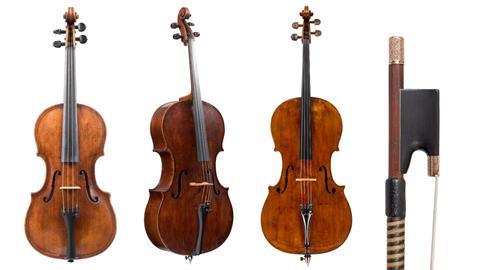
Read more news articles here
Read more premium content for subscribers here
There was an air of uncertainty hanging over this season’s auctions: in the UK the looming first Labour budget, in the US the presidential election. Perhaps that uncertainty communicated itself to the results, with a goodly number of high-ticket lots not selling. The one bright standout this year was Tarisio’s renewed investment in their London operation, with opulent new premises off Regent’s Park, including three showrooms and 104 lots on the block (up from 63 last spring). Likewise, they achieved their now customary lead in lots sold, at 93 per cent.
Two of the three top lots this season were cellos. A c.1720–30 Francesco Gofriller with altered dimensions and a replacement Cremonese scroll, accompanied by a J&A Beare certificate, went for £330,000 at Tarisio. Brompton’s sold a c.1793 Nicolas Lupot cello, with Hill and Rampal certificates, for an undisclosed amount against an estimate of £200,000–300,000. Lupot did not make many cellos and there was predictable interest.
Ingles & Hayday (I&H) had success with two Lorenzo Storioni violins. The first, c.1770, was on a smaller, ‘del Gesù’-ish model, with some condition issues including a patched back soundpost crack. It was a golden opportunity for someone to own a Storioni for less than six figures and it sold for £54,000. The second, c.1800, was a first-rate instrument in every way, relatively broad in model with excellent wood choice and in fine condition. It sold for £312,000.
There were also some interesting comparative pairings of classical Italians across the houses. Violins by Andrea Guarneri were sold by I&H (c.1675 at £108,000) and Brompton’s (1684 at £165,200), and each house sold a Carlo Antonio Testore: Tarisio (1737 with Hill certificate at £72,000), I&H (c.1740 at £90,000), and Brompton’s (c.1750 at £47,200).
Other high-ticket items included an 1805 Giovanni Battista Ceruti violin, long held in a private estate. A dendrochronological assessment by Peter Ratcliff showed a last ring date of 1790, consistent with the instrument’s label. It realised £177,000 at Tarisio, a relative bargain for a late classic Cremonese maker. Over at I&H a c.1710–20 Alessandro Gagliano violin, excellent apart from re-positioned f-hole notches, exceeded its top estimate at £132,000.
The two most notable violin bows of the season were both sold by I&H. A c.1810 gold- and tortoiseshell-mounted F.X. Tourte (the later frog by Joseph Henry) almost doubled its top estimate at £132,000. An ex-Arthur Grumiaux gold-mounted c.1840 Dominique Peccatte also went higher than expected at £78,000.
Tarisio offered two premium Parisian violins that attracted much interest: a 1779 Vincenzo Panormo with Kenneth Warren & Son certificate making £70,800 and a very fine c.1810 Nicolas Lupot (ex-Manowitz, ex-Lampe), trailing a stream of certificates (including Hill and Rampal), was chased up to £192,000.
Brompton’s sold a fascinating example of that group of double-purfled violins formerly known as Magginis but now, by dendrochronology and stylistic consensus, attributed to Giovanni Battista Rogeri. In these second-generation Maggini-inspired instruments, archings differ and a smoother Cremonese technique is evident. In this particular case, an instrument featured as a Maggini in The Strad from March 1954, following a dendrochronological last ring date of 1672, has been reattributed as a c.1690 Rogeri (Brescia). It sold for £59,000.
There were some interesting comparative pairings of classical Italians
Moving along to less stratospheric, but nevertheless historically interesting lots: I&H offered a c.1790 John Dodd violin bow which is of a type that bridges the transitional and fully modern Tourte bow, with one of Dodd’s earlier more ‘organic’ ivory frogs. This example more than trebled its top estimate at £11,400. Another fine English bow, a chased gold-mounted James Tubbs presentation bow of 1897, sold for £9,440 at Brompton’s.
Tarisio sold two instruments of considerable English historical interest. One is a violin certificated to Nathaniel Cross c.1720 by John Dilworth, with a rare label showing that it was sold from London Bridge by Elizabeth Miller. It sold above top estimate at £8,400. Then there was an immaculate c.1780 violin by Joseph Scott of Haltcliff as illustrated in The British Violin. It is remarkable that so fine and well-kept an instrument should have been made in a Cumbrian mining village by the local gentleman farmer. This gem made £7,800.
Brompton’s sold a fascinating viola of 408mm, possibly by Giovanni Battista Bodio of Venice, for £24,000. It followed a very broad model documented for this maker, but also with similarities in outline to Benjamin Banks’s broader model (see The Strad, October 2020), making one think of long-distance cross-observations of viola form in the late Georgian era. Also at Brompton’s, in the wake of Hannes Obermair et al’s beautiful new monograph on Matthias Albani (fecit in Tyroli), a 1697 violin by Mattias Albani of Bolzano went well above estimate for £28,320.
I&H sold a small collection of instruments and (predominantly) bows from the estate of Dorothy Fellows, an Australian musician, teacher and collector who lived most of her professional life in the UK. Its most interesting element was a 1713 cello by early London maker Barak Norman, featuring his ornate purfling on the back and elegant scroll with Staineresque last turn of the volute, selling for £21,600.
Michael Dötsch is probably the greatest violin maker of the 20th-century Berlin school, so we should not be surprised when his instruments double estimates. I&H sold a very fine example after ‘del Gesù’ for £16,800. Another instrument of interest at I&H was an ex-Amaryllis Fleming violin labelled Andrea Guarneri, formerly considered a Storioni, and now thought to be by a member of the Bergonzi family. It sold over estimate at £66,000.
Finally, there was a coincidental trifecta of instruments by the modern Cremona maker Gio Batta Morassi (1934–2018) sold at Tarisio: a 1971 cello (£64,900), a 1979 viola (£23,600), and a 1974 violin (£29,500).
All sale prices include buyer’s premium
Read: ‘Salabue, Matsuda’ Stradivari violin fetches $3.48 million at auction
Read: In Focus: A 1704 cello by Barak Norman
Read more news articles here
Read more premium content for subscribers here
An exclusive range of instrument making posters, books, calendars and information products published by and directly for sale from The Strad.
The Strad’s exclusive instrument posters, most with actual-size photos depicting every nuance of the instrument. Our posters are used by luthiers across the world as models for their own instruments, thanks to the detailed outlines and measurements on the back.
The number one source for a range of books covering making and stringed instruments with commentaries from today’s top instrument experts.
The Canada Council of the Arts’ Musical Instrument Bank is 40 years old in 2025. This year’s calendar celebrates some its treasures, including four instruments by Antonio Stradivari and priceless works by Montagnana, Gagliano, Pressenda and David Tecchler.






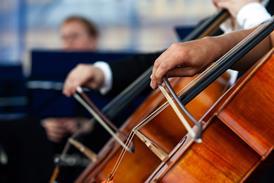



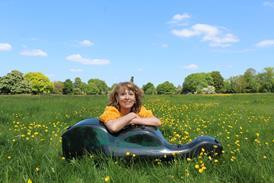

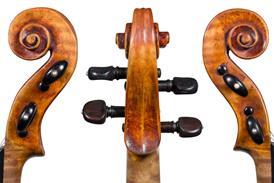

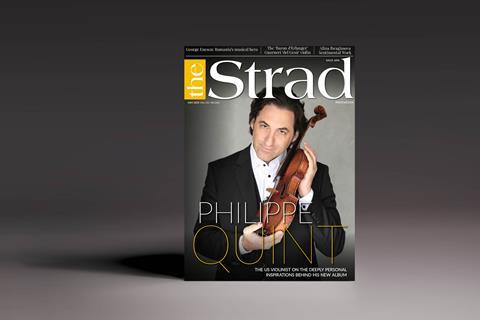






















No comments yet